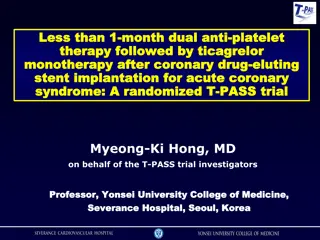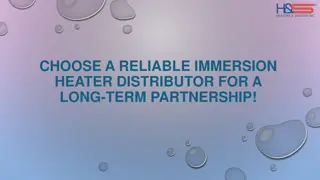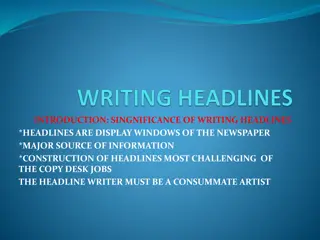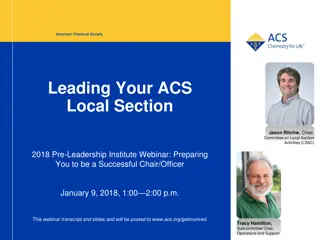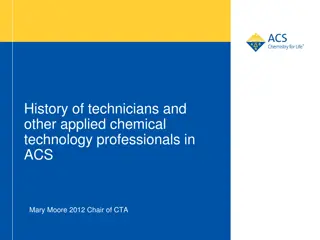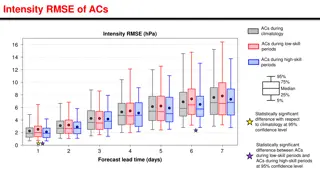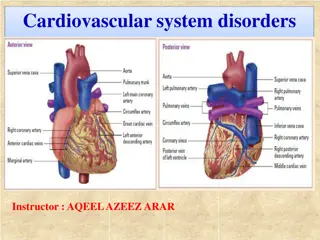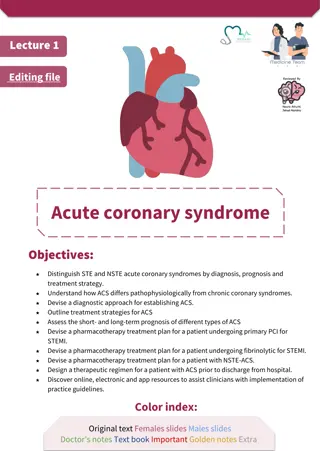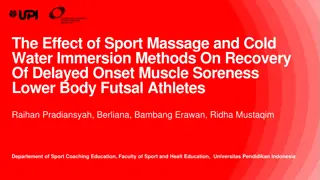ACS Immersion Standards Revision 2 Headlines
This document discusses immersion best practices, high availability requirements, dielectric fluid management guidelines, uptime factors, and qualification checklist for Advanced Cooling Solutions. It also covers topics such as technology styles, solution specifications, liquid management, and facility design information.
Download Presentation

Please find below an Image/Link to download the presentation.
The content on the website is provided AS IS for your information and personal use only. It may not be sold, licensed, or shared on other websites without obtaining consent from the author.If you encounter any issues during the download, it is possible that the publisher has removed the file from their server.
You are allowed to download the files provided on this website for personal or commercial use, subject to the condition that they are used lawfully. All files are the property of their respective owners.
The content on the website is provided AS IS for your information and personal use only. It may not be sold, licensed, or shared on other websites without obtaining consent from the author.
E N D
Presentation Transcript
ACS Immersion ACS Immersion Standards Revision 2 Jimil M. Shah, Application Development Engineer, 3M EMSD jshah2@mmm.com Rolf Brink, Immersion Stream Leader, OCP rolf.brink@ocproject.net
ACS Immersion goals ADVANCED COOLING SOLUTIONS Define requirements and specifications to stimulate immersion technologies in OCP Most immersion technologies are unique in shape, size and solution approach Standards must be inclusive to most solution types Prevent limitations on new innovations
Contributors Rolf Brink, Asperitas Jessica Gullbrand, Intel Nigel Gore, Iceotope John Bean, Schneider Electric Rick Payne, Flex Jimil M. Shah, 3M ADVANCED COOLING SOLUTIONS
2019 Publication Summary Technology styles Enclosed chassis, Tank-style and Hybrid Feature Classifications (Standards, thermal optimized, high safety Certification Compliancy Liquid Management DCIM/Redfish integration
2019 Publication Summary - Continue Solution description specs Comparable metrics based on SI Required documentation Data center Interface requirements Dielectric Fluid Requirements
Comparable metrics based on SI Density per square meters: kW/m2@ # C Compute density Solution density Solution footprint *ASHRAE W3 solution footprint: kW/m2@ 32 C Power/fluorocarbon volume (kW/litre) Facility design information Static load, height clearance, dT, cooling tolerance, etc. ADVANCED COOLING SOLUTIONS
Outline: Revision 2 headlines Document split: Immersion best practices vs SPEC High Availability requirements Dielectric fluid quality management guidelines Immersion related uptime factors Immersion qualification checklist ADVANCED COOLING SOLUTIONS
Document split Immersion best practices white paper Common context (metrics, terminology) Design guidelines (safety, form factor, shape etc) Advisories (Liquid management, EMC, containment etc) New availability insights SPEC Qualifiable minimum specifications Potential OCP recognition for meeting SPEC (in discussion) ADVANCED COOLING SOLUTIONS
High availability requirements Compliance with all thermal optimized and high safety classifications Dual power delivery and full selectivity of critical features Certified/confirmed by independent 3rdparty Ability to distribute redundant power to all electronics N+1 or 2N cooling ability (at least dual heat exchanging) N+1 can be supplemented with specific ride through capabilities
Dielectric fluid quality management guidelines Hydrocarbons Mineral oils should be avoided. Only synthetic liquids should be used. The properties of the oil in operation should be tested for oxidation stability, interfacial tension, particle count, flash point, viscosity, break down voltage, density and corrosive Sulfur at regular intervals to monitor fluid quality ensuring consistent performance over time. ADVANCED COOLING SOLUTIONS Fluorochemical The fluid conditioning system should be designed to remove water, oils, acids and thermal decomposition products from Fluorochemical fluids.
Hydrocarbons: Contaminants Sources/Cause Prevention/Remediation Particles or fiber Oil or equipment e.g. metallic, fiber, sludge in mechanical circulated systems. A continuous filter system Moisture Atmosphere/manufacturing process Any open bath solution should contain a lid to limit ventilation of the air to liquid interface. Oxidation could be detected by acidity and color appearance monitoring. It could be mitigated by moisture level, overheating and contamination control. Monitor for Sulfur contents on a regular basis Check interfacial tension Sludge Oxidation in oil Corrosive Sulfur Degradable products and soluble polar contaminants Generation of low molecular hydrocarbons Introduced by IT materials Incompatibility Produced by overheating or electrical discharge/cause lowering in flash point of oil Low molecular hydrocarbons could also come from cables and other IT materials after overheating and degradation., eg.EVA and PE are used in different types of cables. Server components Avoid completely Contamination by plasticizers, grease, adhesive, ink, elastomers, rubber, solder flux, coatings, etc. Check material compatibility. Refer to upcoming OCP whitepaper IT gear for immersion strategies for more details.
Fluorochemical fluids: Contaminants Sources/Cause Prevention/Remediation Wire insulation, silicone rubber, solder flux, etc. Activated Carbon Inert hydrocarbon such as DOP, PDMS, etc. Printed Circuit Boards Activated Carbon Chemically active hydrocarbon such as solder flux Water Condensation. Heat Exchanger Leak Silica Gel or Metal Sulfate Particulate Manufacturing Residue Mechanical Filtration to <1 m Decomposition Products: COF2, Unsaturates, HF, etc. Electrical Failure resulting in Arc or Red-hot burn Activated Alumina or Base Wash
Immersion related uptime factors 1-Ride through ADVANCED COOLING SOLUTIONS Dielectric ride through Thermal buffer of the liquid Partial dielectric ride through N+1 or 2N like systems FWS ride through Built-in buffer in the FWS
Immersion related uptime factors 2-Thermal design ADVANCED COOLING SOLUTIONS Dependent on immersion solution Dampening effect by liquid Minimize thermal stress on (micro) components Thermal stability by controlled or predictable flow More stable chip temperatures
Immersion related uptime factors 3-Other factors ADVANCED COOLING SOLUTIONS Alternate cooling sources as backups (river, pools, etc) High temperature cooling allows reuse as primary cooling (traditional circuit as back-up) Insulation against oxygen (oxidation protection)
Upcoming ACS Immersion activities Immersion systems New technology reviews Solutions Liquids Industry standards optimization IT Gear Design guidelines for IT Material compatibility Thermodynamics Immersion components Future designs ADVANCED COOLING SOLUTIONS
ACS Immersion workstream Join the immersion workstream and contribute! ACS Immersion schedule: Each 3rd Tuesday of the month https://www.opencompute.org/wiki/Rack_%26_Power/Advanced_Cooling_ Solutions Mailing list: http://lists.opencompute.org/mailman/listinfo/opencompute- acsimmersion On-going project: Document split and IT Gear specs, guidelines and best practices


